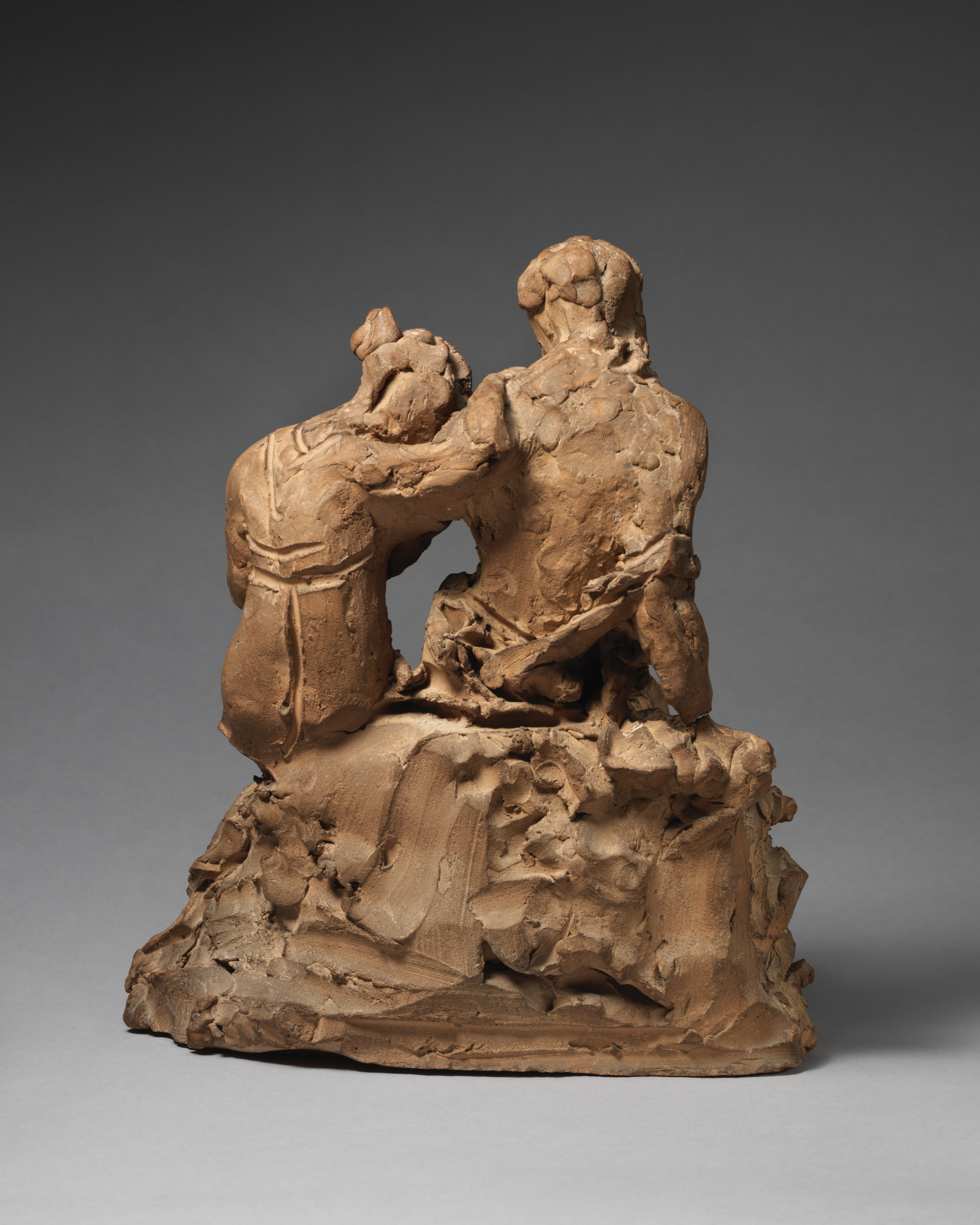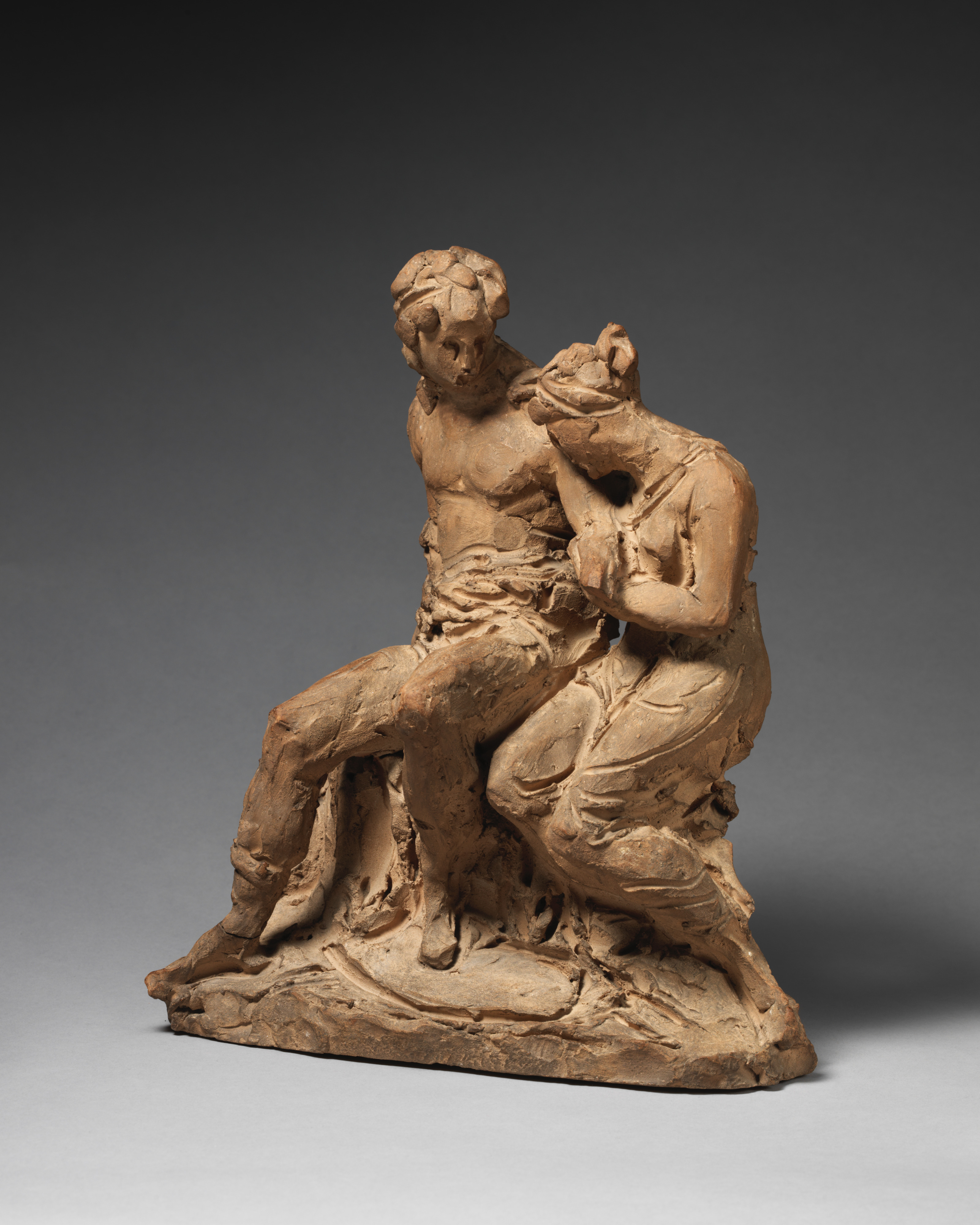King Edward I (1239–1307) and Queen Eleanor (1241–1290)
Charles Rossi, R.A. British
Not on view
The future king Edward’s young bride Eleanor tenderly embraces his outstretched arm, sucking poison from his bicep in an act of selfless devotion after a Muslim assassin feebly stabbed the prince with a poisoned dagger during the Ninth Crusade in 1272. The subject of Eleanor’s heroism, taken from English legend, is apocryphal (Edward’s life was in fact saved by an English doctor) and yet it remained an irresistible episode of historical melodrama for late Rococo artists in the final decades of the eighteenth-century. In this deftly modeled terracotta sketch, Charles Rossi has transported the medieval legend to ancient Greece. Edward cuts a handsome figure as a youthful classical prince. At ease in the care of his female companion, Edward’s rippling flesh – exposed entirely but for his genitals, covered by drapery - invites the viewer’s gaze from the contours of his well-defined pectorals to the graceful extension of his wounded left arm, clutched by his bride. By point of contrast, Eleanor is presented as a demure Grecian maiden, her drooping body obscured by her classicizing tunic.
A swift and energetic first sketch for a marble group (now lost), this terracotta nonetheless contains an extraordinary degree of tenderness and human pathos. King Edward I and Queen Eleanor dates to Rossi’s early period when his style was still deeply informed by the art of Canova. The composition’s original source was likely a painting by Angelica Kauffman, exhibited at the Royal Academy in 1776 and subsequently distributed in an engraving by William Wynne Ryland. However, a nearer source can be found in the work of the neoclassical sculptor John Deare, whose composition for a marble relief of the subject was first exhibited at the Royal Academy in 1788.
Due to rights restrictions, this image cannot be enlarged, viewed at full screen, or downloaded.
This artwork is meant to be viewed from right to left. Scroll left to view more.




